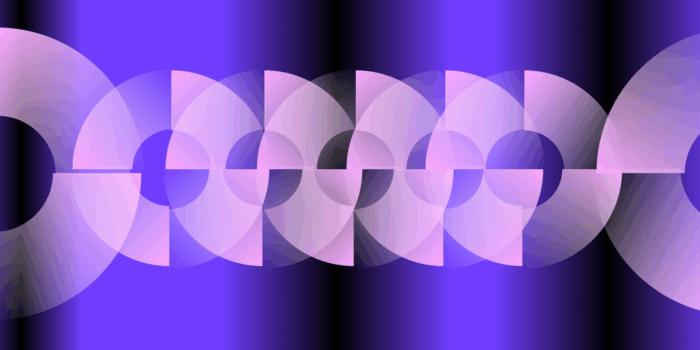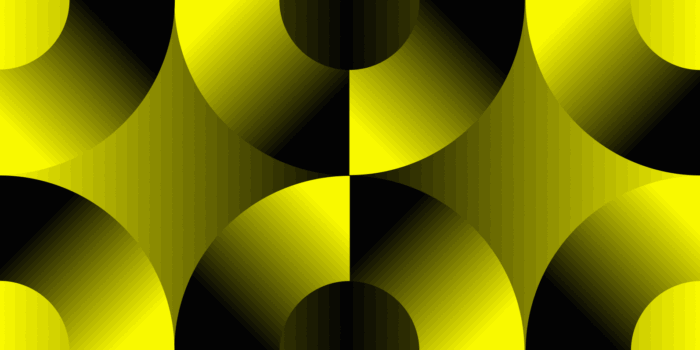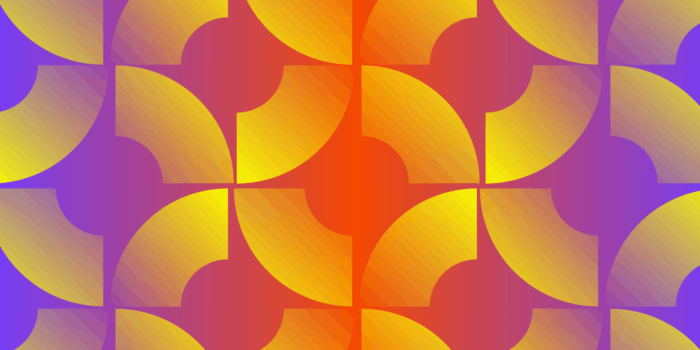As a graphic designer, much of the creative industry conversation has centered around artificial intelligence. Whether discussing ethical concerns of intellectual property or the potential reduction of design jobs, the consensus is clear: to stay ahead in the competitive world of design, creatives should embrace AI and ride the wave (tsunami) of AI-based creative software. With nearly every major company launching AI tools or features in their platforms, these tools are becoming widely available, ensuring ease and compatibility with pre-existing design workflows.
Here are 11 tools I’m incorporating into my process to supercharge my design workflow and stay competitive in today’s era of new creativity.
Top 10 AI Design Tools
1. Photoshop Generative AI
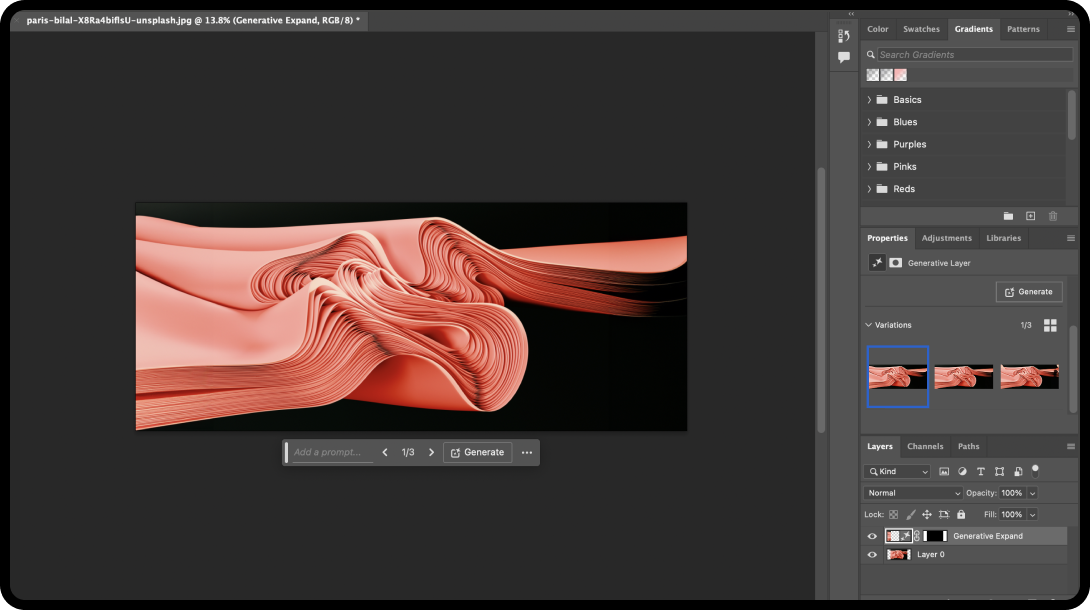
One of the most successful AI integrations is Adobe’s generative AI tools in Photoshop, simply because they focus on what designers do most in the platform: removing items or expanding imagery. In my creative process, Photoshop AI takes the cake in terms of ease and quality of the results.
Using Photoshop’s all-too-familiar lasso tool, you can generate content-aware designs in specific sections of your working file. Since most designers are very familiar with the Adobe Creative Suite, this AI integration is a game changer to speed up and optimize the designer’s workflow in a platform that creatives are already working in.
Key Features
- Content-aware fill
- Object-aware refine edge
- Generative expand fill
Pricing
- Included for free in Adobe Creative Cloud Subscription ($60/month per person)
2. Magic Design in Canva
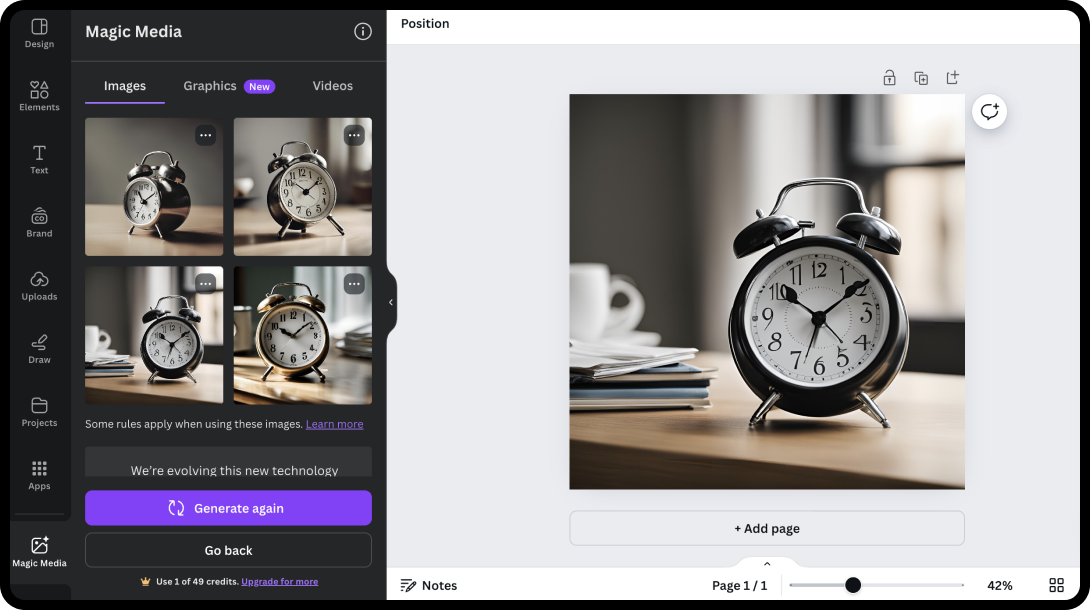
Canva, a design tool with a low barrier of entry, has launched “Magic Design” as its AI design integration. This enhancement interacts with every function of the platform, meaning that Canva just became an easier and more creative option for any graphic design project.
Although Canva isn’t most designers’ creative platform of choice, it tends to be the first choice for non-designers or clients because of its intuitive interface. This means that designers might need to work within this platform to build out design templates that can be handed off for later customization.
What’s exciting to me is this feature’s ability to automate and uncomplicate the design process and editing tools making it incredibly user-friendly for both beginners and professionals. With features like background removal and Magic Resize, Canva simplifies any design idea and speeds up your design process.
Key Features
- Background removal
- Magic Resize
- AI-powered design suggestions
- Extensive template library
Pricing
- Free (premium plans give 20+ additional AI tools)
3. Midjourney
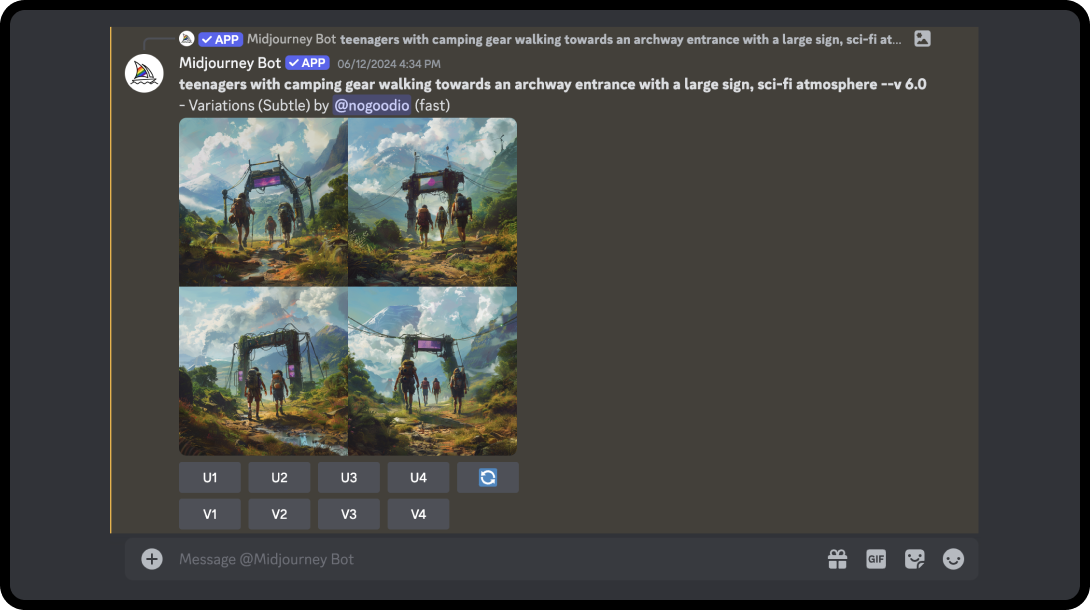
Of all the text-to-image AI platforms, Midjourney is leading the way in terms of creating specific and hyper-customizable image outputs in any style. If you’re unfamiliar with Midjourney, know that their AI software is so robust that it generates four image variations from a single prompt. The user can then hone in and get more variations of one of the outputs or upscale their selected file to be used in any creative asset. This allows you to keep refining your output until it’s exactly what you’re looking for.
Using Midjourney, the output is often better or more creative than what I asked for, making it a great source of inspiration and an invaluable tool for asset creation.
Even if you can’t prompt Midjourney to create exactly what you’re looking for, the outputs are high-resolution enough that designers can utilize small elements of the image in other design assets, too.
Need mockups of a billboard on the side of a highway, or a grainy paper texture to use in other design platforms? Midjourney can do all that and more. This platform also allows you to zoom in and out of the output and create variations of specific regions, making it one of the most versatile prompt-to-image AI tools available.
Key Features
- Text-to image generation
- Iterative refinement
- High-resolution outputs
Pricing
- $10/month for the basic plan
4. Chat AI (Previously Playground.ai)
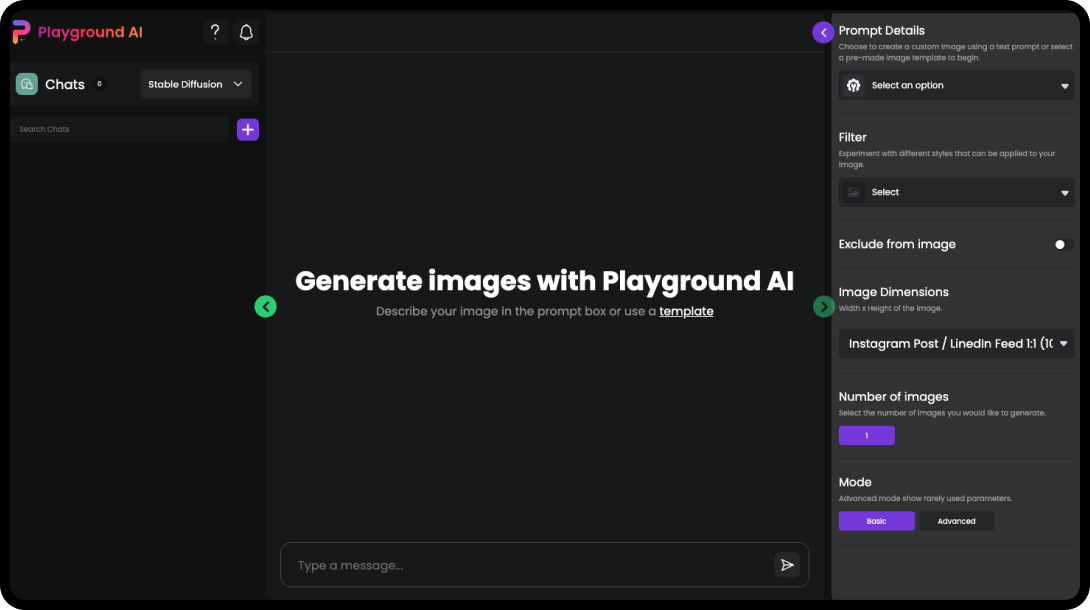
Chat AI (previously Playground AI) is a great alternative to Midjourney, specializing in text-to-image AI features. Accessible both on their website as well as through the Chat AI app, users can generate images based on descriptions.
What’s great about Chat AI is that input isn’t limited to one prompt, like Midjourney. Instead, Chat AI offers more specific input prompts, optimized for creatives where you can differentiate between options like “stock imagery” and “wallpapers” as well as the ability to add image dimensions or style filters. This format of prompting allows for more specific inputs with options to adjust certain aspects of the prompt without having to start over.
Key Features
- Text-to-image based prompting
- Customizable art styles
- Visual aids to prompt options
Pricing
- Free Plan with ten images/month
5. Khroma
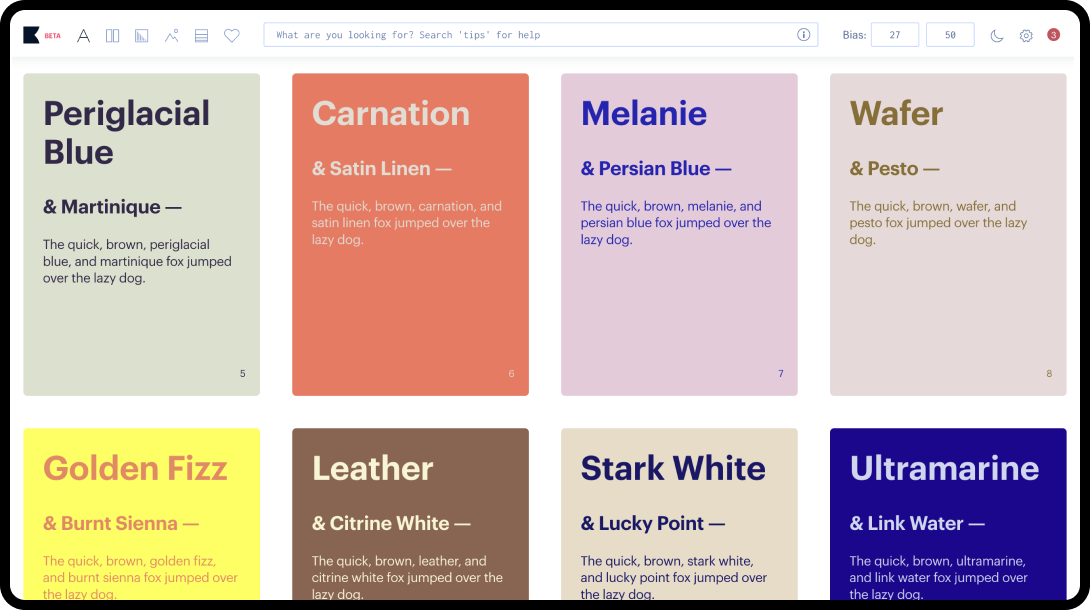
Gone are the days of color-picking from images or randomly selecting from the color wheel. Khroma is an AI tool for designers to create unlimited color palettes based on your personal preferences. Since color can be so personal – either for you or for your design client – Khroma is a great free AI tool that can be integrated into any branding project.
Specifically, this could be a great initial design activity for your client to work through to get the ball rolling on what colors to work with. From start to finish, this tool is easy to use and, honestly, pretty fun. After choosing 50 colors from an endless list, you’ll get custom color palettes with specific HEX codes that you’ll love.
Key Features
- Infinite color combinations
- View as 2-color or 4-color palette
- Generate color combinations endlessly until you get the perfect one
Pricing
- Free
6. Adobe Firefly
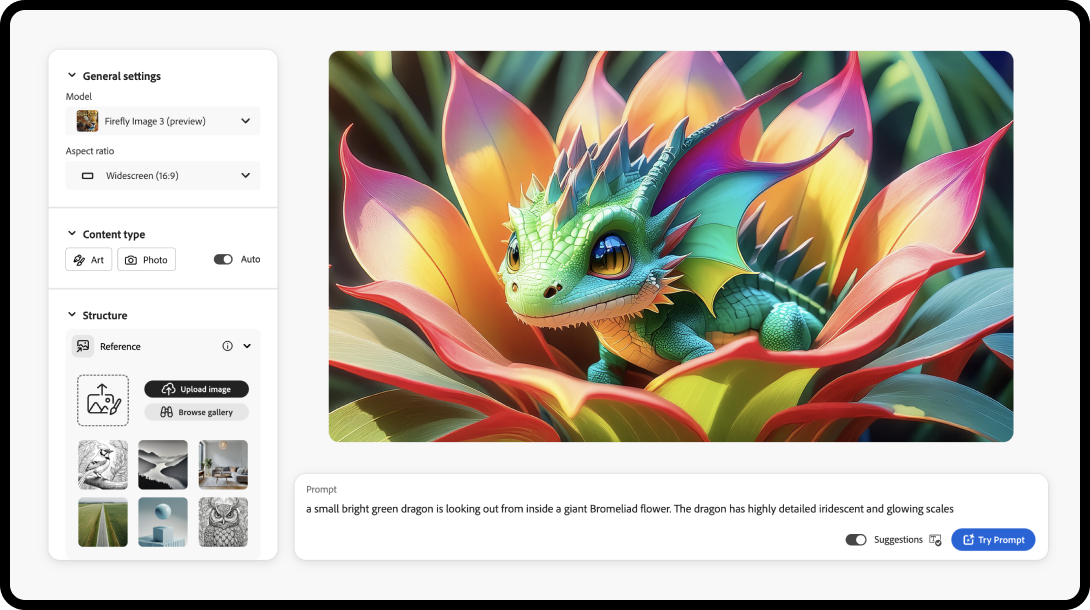
This web-based image generation tool from Adobe is getting a lot of attention within the design world. What sets this generator apart is the structure reference ability, which allows you to upload an image of the exact form that you want your image to take on.
For example, if you wanted to generate an image of a house with a large tree in the front yard, you can draw that exact form in a low-fidelity style and pair it with any reference style. These two inputs allow you to curate the exact form and design of the image Firefly puts out. In addition to the text-to-image conversion, Firefly has great customization abilities like adding effects or adjusting lighting to be golden hour, backlighting, or studio light, for example.
Key Features
- Image style examples
- Creative customization
- Web-based
Pricing
- Free or premium plan options
7. Runway
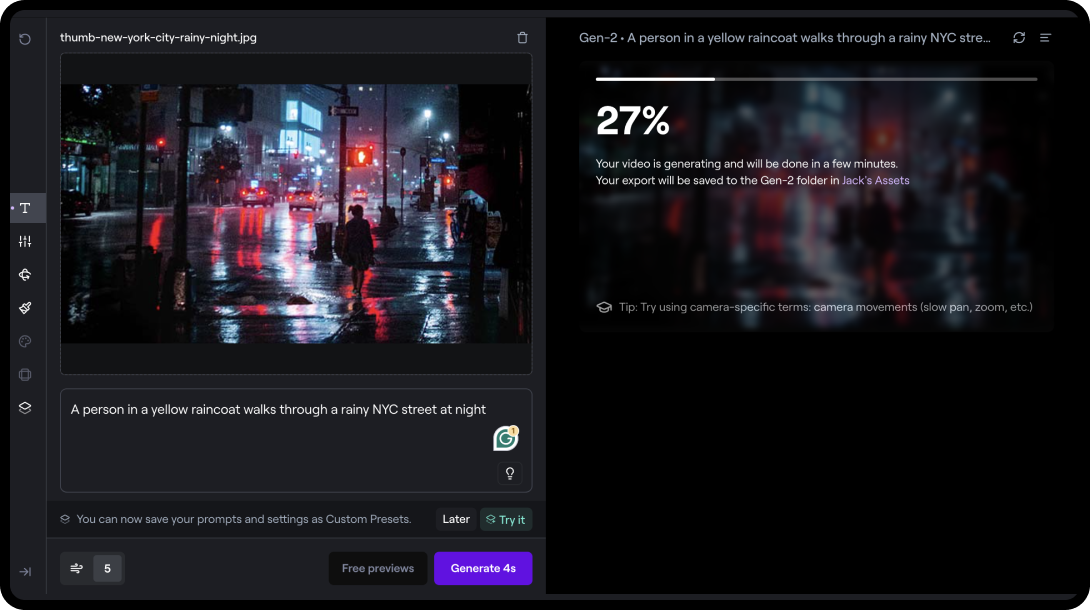
Runway makes tools for human imagination, as they claim on their website. Of these tools, they specialize in video offerings, with robust text-to-video or video-to-video AI tools. Like most other AI tools listed here, this tool is prompt-based, creating hyper-realistic footage in just about any style you can think of.
Although this tool produces videos that have limitless creative potential, some of the prompts render unrealistic footage. This means that the tool might be best suited for storyboarding or concepting and not for footage that’s interchangeable with that of professional filmmakers.
Key Features
- Artistic filters for videos and photos
- Continuous iteration of prompt
- High-resolution outputs
Pricing
- Free
8. Remove.bg
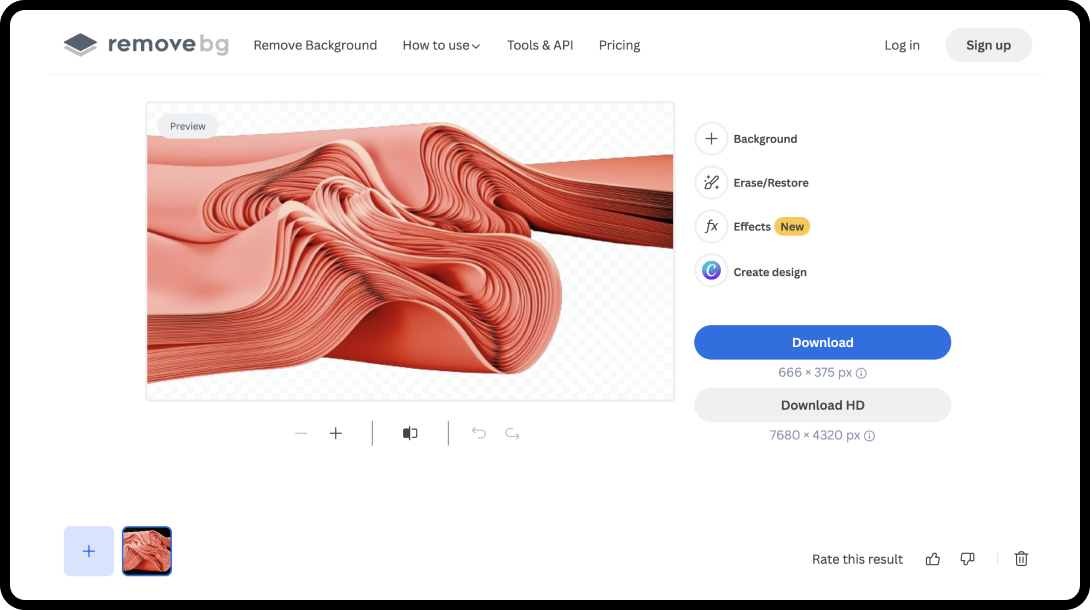
Plain and simple, Remove.bg specializes in automatic background removal. And I hate to break it to you designers, but removing the background of images will always be a part of the job, wherever you go.
Although Photoshop’s new AI tools have improved the background removal process, Remove.bg specializes in this task and excels at it. With its AI-driven technology, you can quickly and accurately remove backgrounds from images, which makes it an especially useful tool to streamline the creative process and allow you to spend more time designing – instead of editing imagery.
Key Features
- Automatic background removal
- High-resolution outputs
- Integration with popular design tools
Pricing
- Free
9. Genie
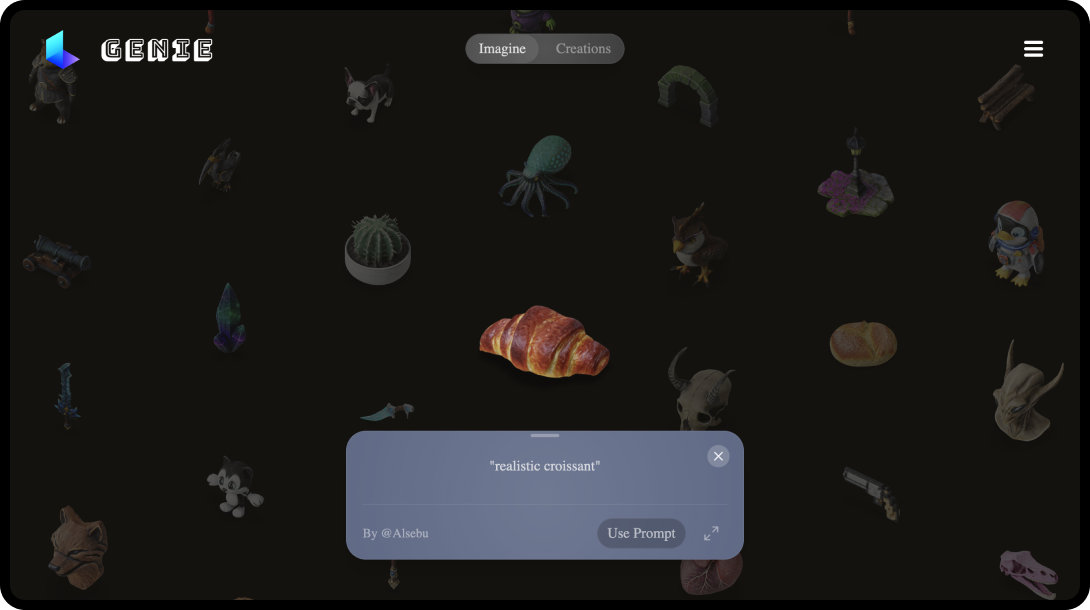
Ever wondered what an elephant dressed as a detective looks like? A kangaroo with a top hat on? A pirate with lizard scales? Look no further than Genie by Luma Labs to create a high-resolution 3D model of anything you can think of.
While Luma is focussing on creating “Dream Machine,” an AI model that makes high-quality, realistic videos from text and image, I recommend playing around with Genie, their free AI tool to create these hi-res models. Iterate quickly before choosing a direction to render in higher quality, and don’t worry, you don’t only have 3 wishes with this Genie.
Key Features
- Text-to-3D Model
- Rapid prototyping
- Shadow and reflection effects
- Batch processing
Pricing
- Free
10. Vizcom
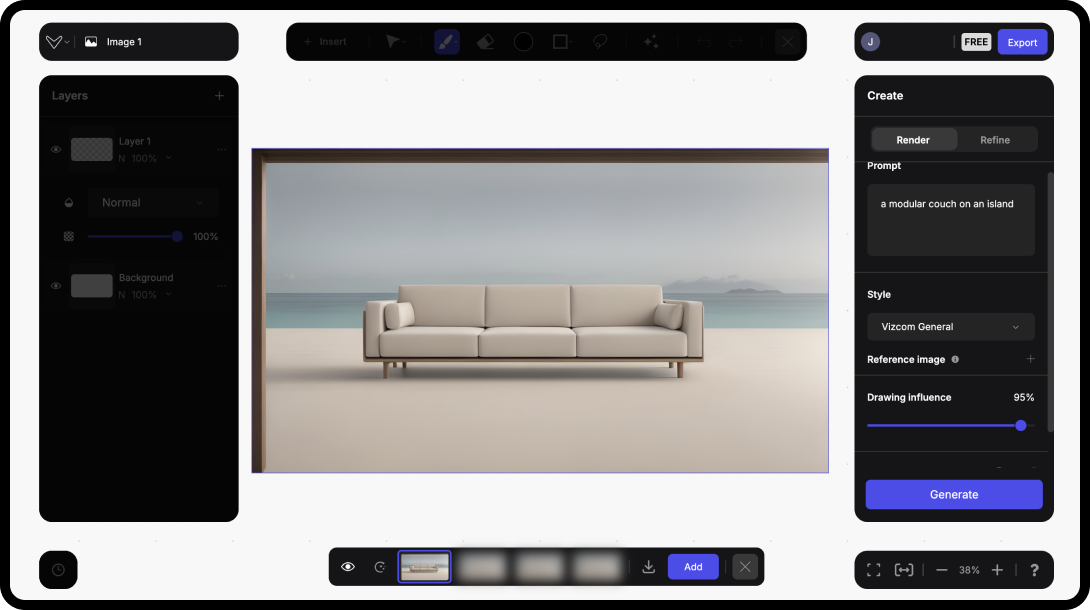
Vizcom is the one to watch in the field of product design and 3D rendering. This tool is a secret weapon for rapid prototyping, where you can upload a sketch and render that into a 3D model. Using an image as the basis for the prompt, a written prompt allows the AI engine to refine the rendering and take styles or visual direction into account.
What’s great about this process is that it positions human-made creative work at the forefront and allows AI to enhance and elevate your work. This process – paired with their collaborative whiteboard feature – makes this tool a no-brainer for design teams to incorporate in their process.
Key Features
- Creative-first process
- Collaborative workspaces
- Design tools like texture control, editable layers, and drawing tools
Pricing
- Free starter plan with unlimited files and exports
11. Uizard by Miro Labs
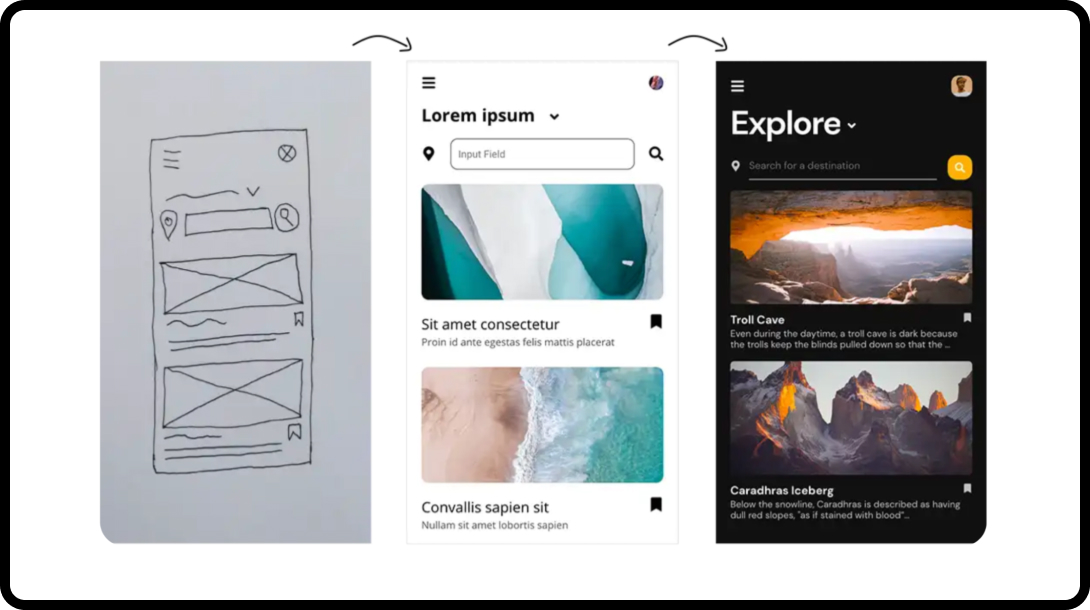
Miro has been a leading innovator in live digital collaboration since the days of Covid and is still leading the way in online whiteboard tools for organizations and educational groups worldwide. Focusing on providing the tools that teams need to move their work forward and stay organized, it makes sense that they’re incorporating AI technology into their offerings. More specifically, they’ve debuted a new product, Uizard, that brings UI prototyping to their online whiteboard technology.
With Uizard, Miro says that “Ideation and iteration has never been so simple.” Uizard allows users to create UI designs from text prompts that can generate a multi-screen, editable mockup in a matter of seconds. In addition, you can upload a screenshot of another interface, or even a sketch, and the program will generate an editable design based on this reference. From there, you can make any customizations or edits.
Key Features
- Collaborative workspaces
- Text-to-design prompting
- Screenshot-to-design upload
- Editable UI prototype in real time
Pricing
- Free for 3 AI generations per month with Autodesigner 1.5
- $12 per member, per month for AI Engine Autodesigner 2.0, which allows for 500 AI generations per month
Invest in the Right AI Tools for Your Design Needs
AI design tools are revolutionizing the creative industry, making it easier to produce high-quality designs efficiently. By incorporating these tools into your workflow, you can enhance your creativity, streamline your creative process, and stay ahead in the competitive design world.
While each of these tools offers unique specialties and specific use cases, they all serve to augment and enhance the creative process. Yes, AI is an amazing tool for the creative process, but it’s not a magic bullet to bypass your creative process and produce the finalized design. Embracing AI tools and integrating them in your design process will help speed up your workflow, but won’t replace it in full, no matter how many tools you integrate.

